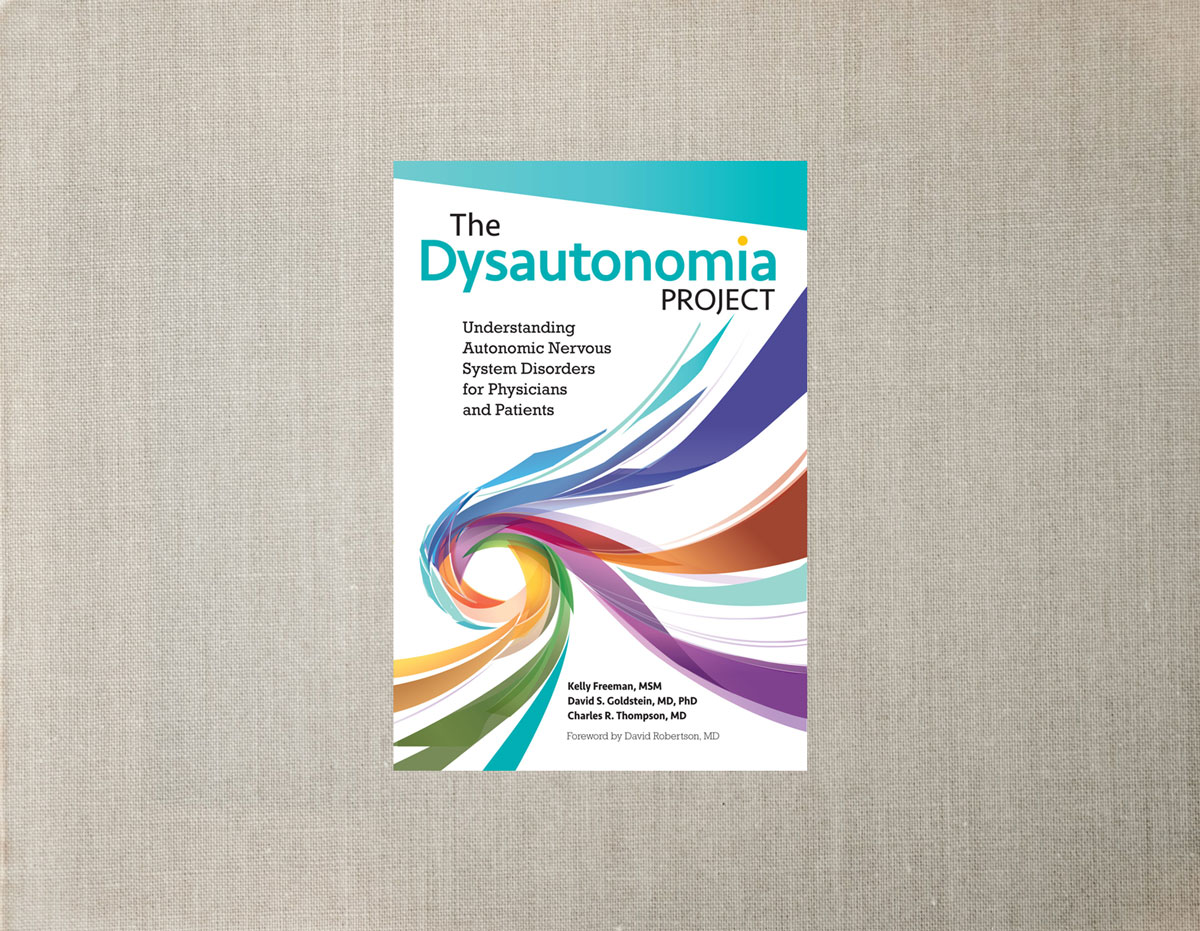Elke Hausmann is a salaried GP in Derby.
‘Dysautonomia, an invisible illness, may be one of the most misdiagnosed medical conditions of all time. Although many decades of clinical research predate this project [see below], disorders of the autonomic nervous system are not taught well, and in some cases completely absent in medical education today.’ (p.8).
This book is the result of the combined effort of physicians and patients from ‘The Dysautonomia Project’; a not for profit collaboration of hundreds of volunteer physicians, patients, and community leaders, originating in Tampa Bay, Florida in 2014; it can be found online at www.thedysautonomiaproject.org. Another impressive resource is www.dysautonomiainternational.org.
‘Dysautonomia, an invisible illness, may be one of the most misdiagnosed medical conditions of all time …’
Dysautonomia has come into the spotlight for a greater number of patients and doctors over the past few years, as it has increasingly been recognised that a significant part of the clinical presentation of Long COVID is due to autonomic dysfunction. There is an growing awareness that postural tachycardia syndrome (POTS) can be diagnosed in a subset of Long COVID patients (by eliciting a sustained increase in heart rate (HR) over 30 bpm in adults (40 bpm in children), or 120 bpm within 10 minutes of standing from lying, generally without a drop in blood pressure (BP). The estimates range widely from 15% to >50% of Long COVID patients.1 It is also becoming more accepted that Long COVID patients who may not meet those thresholds nevertheless can have significant autonomic dysfunction that is driving at least some their symptoms.
Of course, Long COVID cannot be reduced to autonomic dysfunction, and the other significant Long COVID symptom is post exertional malaise (PEM), the hallmark of myalgic encephalomyelitis/chronic fatigue syndrome (ME/CFS), with some Long COVID patients meeting the criteria for an ME/CFS diagnosis. And then there are all those Long COVID symptoms that may be attributed to a malfunctioning immune system (which of course is intimately connected to the autonomic nervous system) or a range of other potential mechanisms. All this arguably makes dealing with Long COVID even harder, as a patient with POTS would be advised to exercise, while a patient with PEM is often not able to do that. Not that this is particularly new in itself, there have always been patients with overlaps between POTS and ME/CFS, for example.
The number one treatment in dysautonomias is education, importantly of the physician, which will then help them to educate their patient …
This book was written prior to the COVID pandemic for patients with autonomic dysfunction and for their physicians (and even prior to COVID things were complicated enough). It is an excellent starting point for anyone wanting to get a better understanding of how the autonomic nervous system can go wrong and what we can do about it. Many chapters are set up in quite a unique way, with a version for patients on the even-numbered pages and a version for physicians on the uneven-numbered ones. That makes this book equally accessible to anyone interested in the topic.
Many chapters are set up in quite a unique way, with a version for patients on the even-numbered pages and a version for physicians on the uneven-numbered ones.
The chapters range from the basics of how the autonomic nervous system works, to assessment and diagnosis, managing dysautonomias, and treatment options. The number one treatment in dysautonomias is education, importantly of the physician, which will then help them to educate their patient, as improved management of symptoms (unfortunately, there are no cures yet) will depend fundamentally on the patient taking on the power and responsibility to manage their own health (of course with the support of their doctor).
I can highly recommend this book to any GP who wants to know more about the autonomic nervous system and dysautonomias – it can be read in a couple of days, and then used as a resource to dip in to whenever you see a patient where you might now think: ‘could this be dysautonomia?’
1. Kavi L. Postural tachycardia syndrome and long COVID: an update. Br J Gen Pract 2022; DOI: https://doi.org/10.3399/bjgp22X718037.
Featured book: Kelly Freeman, David S Goldstein and Charles R Thompson. The Dysautonomia Project – Understanding Autonomic Nervous System Disorders for Physicians and Patients. Bardolf and Company, 2015. ISBN-13: 978-1938842245
Featured image: Background by Annie Spratt on Unsplash






